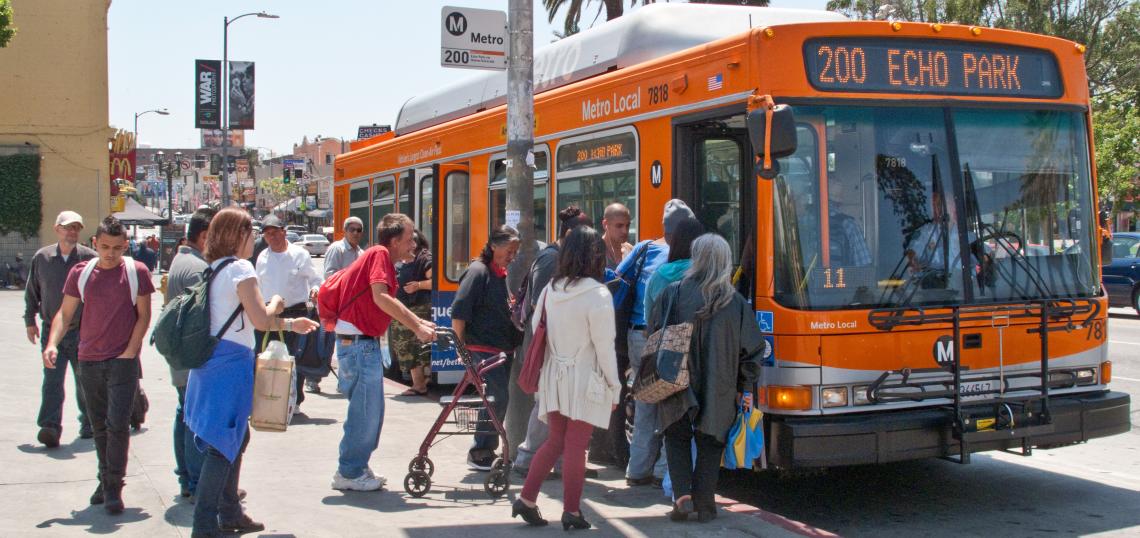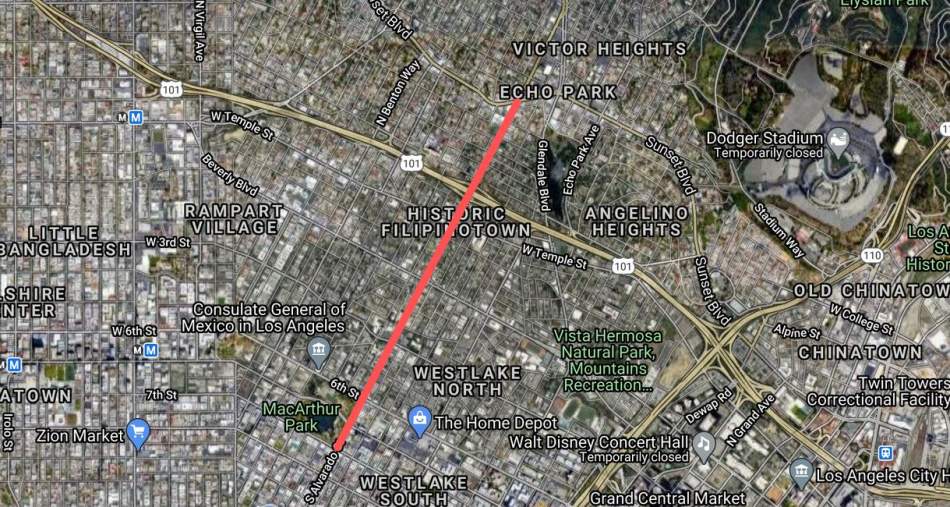Over the past year, the City of Los Angeles has added bus-only lanes to a handful of corridors in Downtown. Now, that effort has been extended to the neighboring communities of Westlake and Echo Park.
Per a staff report issued by the Los Angeles Department of Transportation, officials will study the feasibility of peak-hour bus-only lanes along a 1.6-mile stretch of Alvarado Street between 7th Street and Sunset Boulevard. The proposed project would convert existing peak-hour travel lanes between Monday and Friday, operating from 7 am to 10 am southbound and from 3 pm to 7 pm northbound.
According to the staff report, the dedicated bus lanes would increase service frequency along the corridor from 10 minutes to 7 minutes, while also cutting three minutes of travel time from each direction. Travel times in the other mixed-flow lanes would be impacted by approximately 90 seconds.
The corridor - which begins next to the Westlake/MacArthur Park subway station and intersects with several major bus lines - runs through neighborhoods which are majority Latino and overwhelmingly transit-dependent. Metro data indicates that 94 percent of residents in the area do not own vehicles, and 77 percent of residents rely on bus service five days per week or more.
A traffic study for the project is already underway, and Metro and LADOT staff expect to begin community outreach in January 2021. The project design could also bring about other safety improvements to the corridor - including new lighting and pedestrian infrastructure.
The proposed Alvarado Street bus lane, along with peak-hour lanes already operating on Wilshire Boulevard, 5th Street, 6th Street, and Flower Street, are the most tangible evidence of Metro's NextGen Bus Plan, a sweeping realignment of the Countywide transportation network which aims to improve service speed and frequency, potentially increasing ridership by upwards of 20 percent. As part of the effort, Metro reportedly plans to invest $750 million in infrastructure such bus-only lanes and synchronized traffic lights, while also spending roughly $150 million to improve accessibility and passenger amenities at stations.
Nonetheless, implementation of the NextGen Plan has overlapped with the COVID-19 pandemic and the crippling blow it has dealt to transit ridership nationwide - as well as to the finances of agencies which operate bus and rail systems. Metro, which relies heavily on sales tax revenue for funding, has not been immune to the crisis, slashing its budget for fiscal year 2021 to $6 billion - down $1.2 billion from 2020.
That deep budget cut is reflected in a 20 percent reduction to bus service, as well as pared back service on subway and light rail lines. Those cuts, transportation advocates have noted, eliminate many of improvements in service frequency hoped for in the NextGen Plan.
But while Metro's uncertain finances may have kneecapped service, planning for new bus infrastructure continues. Additional peak-hour lanes are proposed for Grand Avenue and Olive Street in Downtown, as well as along Lincoln Boulevard in Venice. Regional bus rapid transit projects could also bring all-day exclusive lanes to a handful of corridors in Northeast Los Angeles and the San Fernando Valley.
- NextGen Bus Plan (Urbanize LA)
- LADOT Staff Report (h/t @numble)







